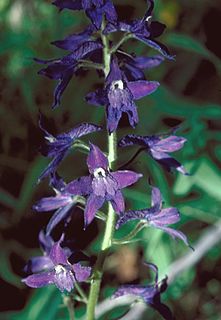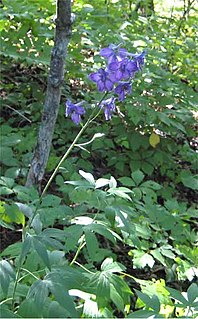
Consolida is a genus of about 40 species of annual flowering plants in the family Ranunculaceae, native to western Europe, the Mediterranean and Asia. The common name, larkspur, referring to the spur-shaped calyx, is shared with the closely related perennial delphinium.

Delphinium bakeri, or Baker's larkspur, is a perennial herb in the buttercup family (Ranunculaceae). It is endemic to California in the United States, where it is a federally listed endangered species. It is known in the wild from one remaining occurrence near Salmon Creek in Sonoma County, where only seven plants remained as of March 2006.

Delphinium parishii, the desert larkspur, is a flowering plant in the family Ranunculaceae native to the Mojave Desert, in the southwestern United States and northwest Mexico. In Southern California it is also found in the Tehachapi Mountains and other Transverse Ranges.

Delphinium nudicaule, known by the common names canyon larkspur, red larkspur, orange larkspur, and canyon delphinium, is a flowering perennial herb in the Buttercup Family (Ranunculaceae).

Delphinium parryi is a species of larkspur known by the common names San Bernardino larkspur and Parry's larkspur.

Delphinium trolliifolium is a species of larkspur known by the common names poison delphinium, cow poison, and Columbian larkspur. It is native to Oregon and northern California. This wildflower reaches one half to just over one meter in height. It has large, shiny, deeply lobed leaves. The top half of the stem is an inflorescence of widely spaced flowers on long pedicels, the longest over nine centimeters long. The flowers are usually deep brilliant blue. The upper two petals may be milky white. The spur exceeds two centimeters in length in the largest of the flowers. This plant is toxic as the common names suggest, but most larkspur species are toxic to some degree.
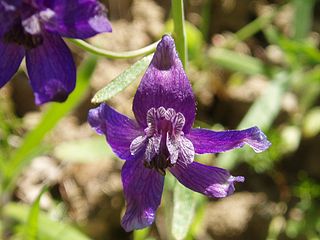
Delphinium variegatum is a species of larkspur known by the common name royal larkspur. It is endemic to California, where it grows in mountains, valley and coast in woodlands and grasslands. On the forest floor of California oak woodlands typical plant associates are Calochortus luteus, Cynoglossum grande and Calochortus amabilis.
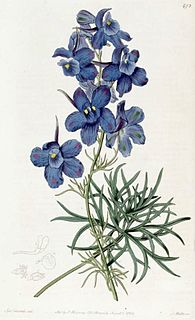
Delphinium grandiflorum is a species of Delphinium known by the common names Siberian larkspur and Chinese Delphinium. It is native to Russia and China. There are several popular cultivars in several colours which are grown as ornamental plants, including 'Blue Butterfly', 'Summer Morning', 'Blue Mirror', and 'Summer Stars'. Like many other larkspurs, this plant is poisonous. It is much shorter and more compact than the more familiar tall D. elatum, with dispersed flowers, rather than single spikes.
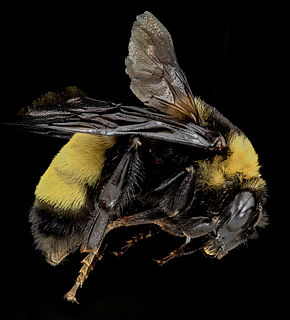
Bombus auricomus is a species of bumblebee known by the common name black and gold bumblebee. It is native to eastern North America, including Ontario and Saskatchewan in Canada and much of the eastern United States, as far west as the Great Plains.
Delphinium stachydeum is a species of larkspur known by the common name spiked larkspur. It is native to the Pacific Northwest and Great Basin of the United States, where it grows in sagebrush scrub and along the edges of mountain forest habitat where it meets prairie and plateau. It is a perennial herb producing at least one erect, slightly hairy stem generally exceeding a meter in height. The multilobed leaves are located mainly on the lower half of the stem except for the area just above ground level. The inflorescence is a branching array of usually more than 30 flowers, each held on a long pedicel. The flower has bright blue sepals around a centimeter long fringed with hairs and surrounding smaller, paler petals. The spur at the back of the flower is just over a centimeter in length.
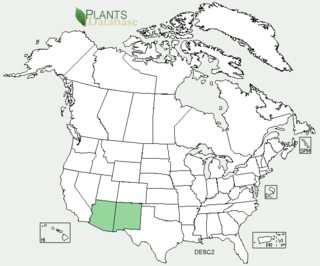
Delphinium scopulorum, commonly known as the Rocky Mountain larkspur is found dominantly in upper elevations of moist meadows. It is a non-woody plant and has a perennial duration, indicating a yearly growth. "Scopulorum" means "of the mountains.
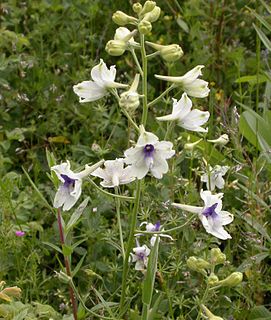
Delphinium pavonaceum is a species of flowering plant in the buttercup family known by the common name peacock larkspur. It is endemic to Oregon in the United States, where it is limited to the Willamette Valley.
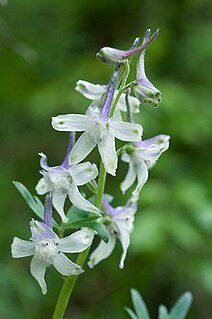
Delphinium tricorne, known by the common name dwarf larkspur, is a flowering plant in the buttercup family. It is native to the eastern United States, where it is the most common Delphinium found. It is found in rich mesic forests, often over calcareous rocks.
Delphinium robustum is a species of flowering plant in the buttercup family known by the common names Wahatoya Creek larkspur and robust larkspur. It is native to Colorado and New Mexico in the United States.
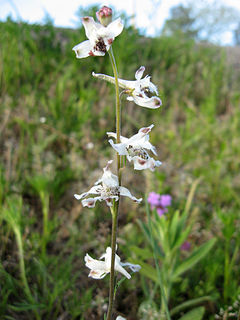
Delphinium carolinianum, commonly known as Carolina larkspur, is a species of flowering plant in the Buttercup family. It is native to the United States and Mexico where it is found in prairies and rocky glades.

Bombus appositus is a species of bumblebee known commonly as the white-shouldered bumblebee. It is native to western North America, including western Canada and the western United States.

HMS Delphinium (K77) was a Flower-class corvette built for the Royal Navy (RN) from 1940-1946. From 1941 to 1943 she was active in the Mediterranean as an escort to convoys supporting the Eighth Army and the invasion of Sicily. From mid-1943 onwards she was on convoy escort duties between Africa, the Mediterranean and the United Kingdom; and Atlantic convoys between North America and the United Kingdom. She escorted a total of 68 convoys.
